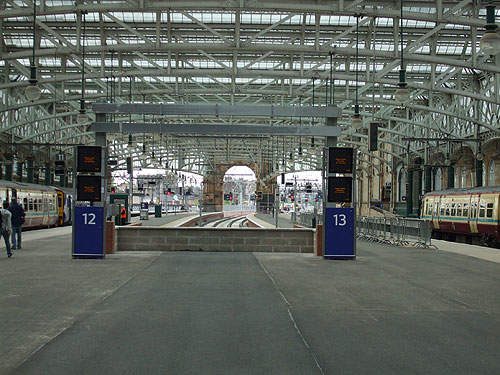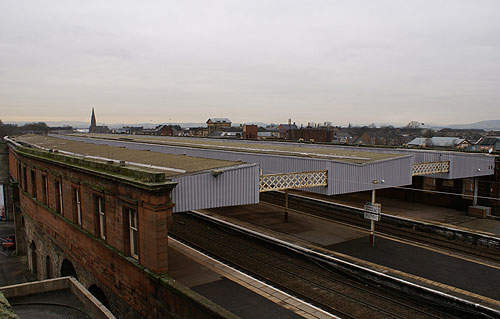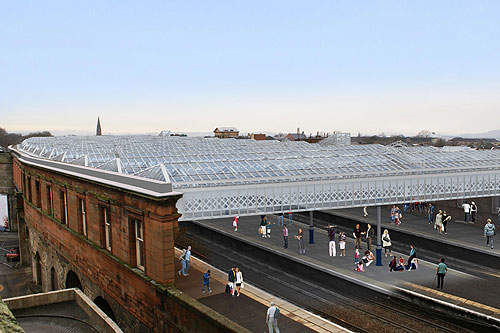The Paisley Corridor is one of the busiest commuter routes in Scotland, with more than 1.3 million passengers traversing the route every month. It lies between the Inverclyde and Ayrshire route that connects to Glasgow Central. Inverclyde and Ayrshire are two different commuter lines that intersect at Paisley Gilmour Street station and thereafter continue as a single line until Glasgow Central station.
Due to growing demand, the corridor is recognised as a route that can derive benefits to a great extent from increased capacity and improvements.
Initiated by Network Rail, the Paisley Corridor Improvement (PCI) project intended to address the capacity issue while providing an infrastructure that could facilitate additional services between Glasgow-Inverclyde and Glasgow-Ayrshire lines during peak times.
The project involved track works, signalling and construction of two new platforms at Glasgow Central station.
The £170m PCI project was funded by Network Rail and Transport Scotland under the Glasgow Airport Rail Link Act of 2007. The project was completed in 2012.
Paisley Corridor project details
The Paisley Corridor passes through Wallneuk Junction, Arkleston Junction, Hillington West and East stations, Deanside Junction, Cardonald station, Ibrox and Gower Street Junction.
PCI is one of the several projects initiated by Network Rail to improve the passenger and freight rail capacity, reliability and journey times in Scotland. The project increased track capacity between Shields Road junction in Glasgow and Paisley Gilmour Street stations, resignalling of the entire Paisley corridor and beyond, and transferring the signal controlling system of Ayrshire and Inverclyde routes to a new West of Scotland signalling centre at Cowlairs. It also included construction of two new platforms at Glasgow Central and extension of the Elderslie Freight Loop.
A new third track was laid between Gower Street and Arkleston Junctions. New signalling, telecommunication, power, overhead line equipment wires and gantry structures were also installed along the stretch.
The track between Cardonald and Gower Street Junctions was reconfigured to provide crossovers between the existing two tracks and the new third track. The final section from Arkleston to Paisley Gilmour Street has four tracks.
Construction of the PCI
Construction of the PCI involved reconfiguring 4.5 miles of the double track between Hillington West and Gower Street Junction into three tracks and adding 1.5 miles of four tracks between Paisley Gilmour Street Station and Arkleston Junction.
Rock cutting was necessitated in the 1.5 mile section to widen the path for four tracks. These works involved excavation of 1,400 cubic metres of material.
New retaining walls are built at various locations along this stretch. The existing drainage was renewed and linked to the existing motorway main drain through an 8.5m long shaft.
New overhead line equipment portals were installed during the PCI enabling works. An additional 284 OLE foundations were installed using a combination of tubular piling and concrete.
Power was provided by the existing overhead line equipment feeder station; however an additional mile of line-side feeder cable was laid by creating a trough route.
The existing Siemens SICAT centenary system was used for the new additions and overhead line equipment modifications.
Construction of the two platforms at Glasgow Central and extension of Elderslie Freight Loop commenced in September 2009 and were completed as of March 2011. The two platforms have been numbered 12 and 13 and have been constructed at a private car parking site that existed between Platform numbers 11 and 14.
PCI track works commenced in January 2011 and the civil works on the Inverclyde and Glasgow commenced in February 2011. Works to renovate the Paisley Gilmour Street have commenced as part of another project in parallel with the PCI project.
The renovated Paisley Gilmour Street Station features 4,740 metres squared of glazed covering on all of its platforms and tracks. Construction works at the station were carried out by C Spencer.
Contractors for the PCI
Invensys Rail and Balfour Betty were the main contractors involved in the PCI project. Invensys Rail won the PCI contract in April 2010.
Valued at £48m, the contract involved works such as replacing the signalling equipment at Shields Road Junction and Paisley Gilmour Street station with WESTLOCK signalling technology, providing three tracks between these two stations and shifting of the signalling control area of Paisley Signalling Centre to the West of Scotland Signalling Centre. Invensys delivered the project in 2012.
Balfour Betty won the £27m multidisciplinary contract in February 2011. It called for the installation of additional tracks, signalling, and power and OLE lines between Arkleston and Gower Street Junctions. The contract was executed in 26 stages within a year’s time.











